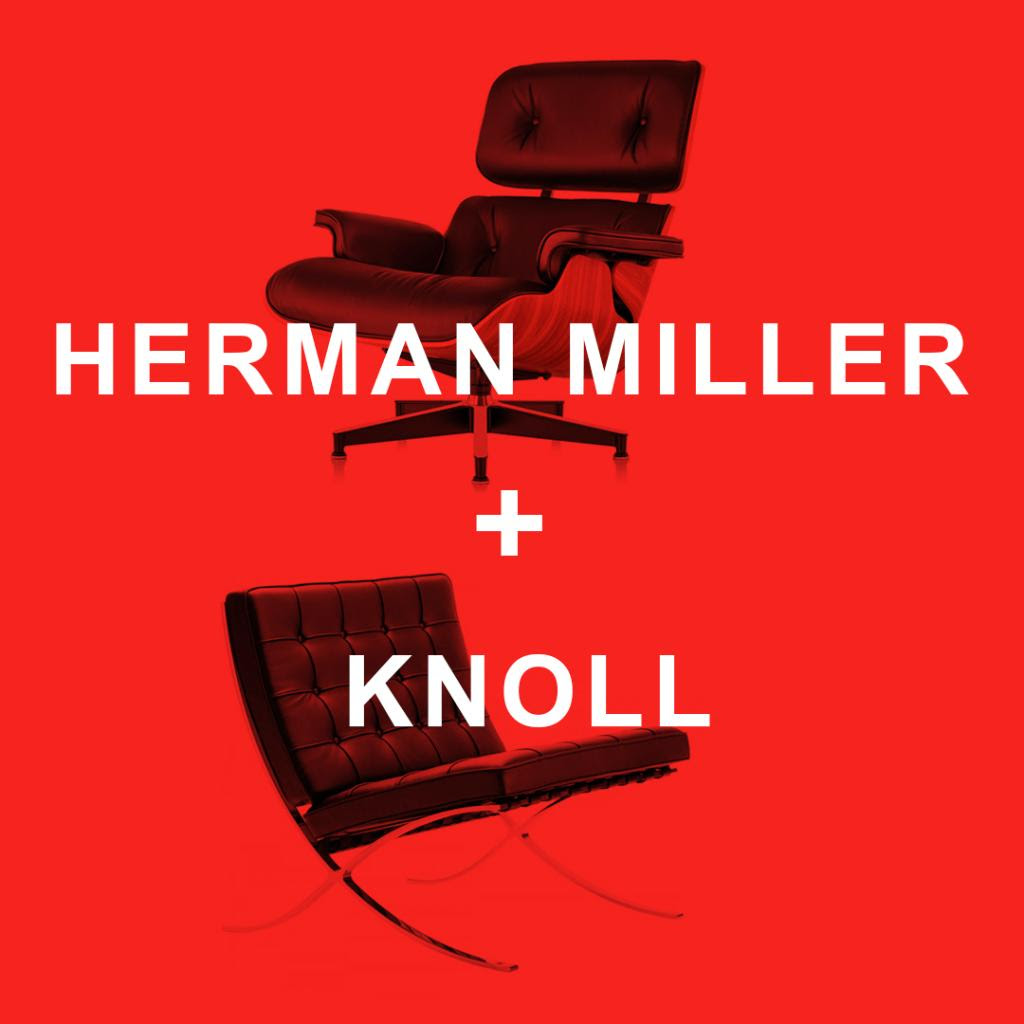Studio Visit: The Herman Miller Archive
We speak with Amy Auscherman about how looking back helps the brand move forward

On a recent visit to Herman Miller‘s headquarters we explored their impressive corporate archive. There we found many expected things like correspondence, old catalogs, sketches, swatches and rare pieces of furniture, along with unexpected treasures like shop floor-made templates for cutting wood pieces of modernist masterpieces and the negatives for the Eames‘ seminal 1977 film “Powers of Ten and the Relative Size of the Universe.” The archive of course plays a significant role in discovering, managing and sharing the company’s past, but it’s also used as a navigational tool in charting the company’s future. “Herman Miller is unique in that we still produce designs that were originally developed in the 1940s, and so much of our past remains so relevant today. The archives are an incredible resource for us to tell our story both internally and externally… a powerful tool that enables us to examine and understand who we were, and apply that to who we want to become,” says Sam Grawe, the company’s Global Brand Director.
This sentiment is reiterated by Greg Parsons, Senior Vice President and Creative Director, Global Work, who’s spending a lot of his time developing the office of the future. “The Herman Miller archive gave us a sense of purpose and principles that literally came to life in the notes, speeches, products, and business models of everyone from DJ DePree, to George Nelson and Bob Propst,” he says. “They were all deeply thinking about how people truly best come together to solve problems and work and live better. They were doing their work in the face of what they believed was daunting technology change, business challenges, and cultural shifts, all delivered a more human-centered model.”
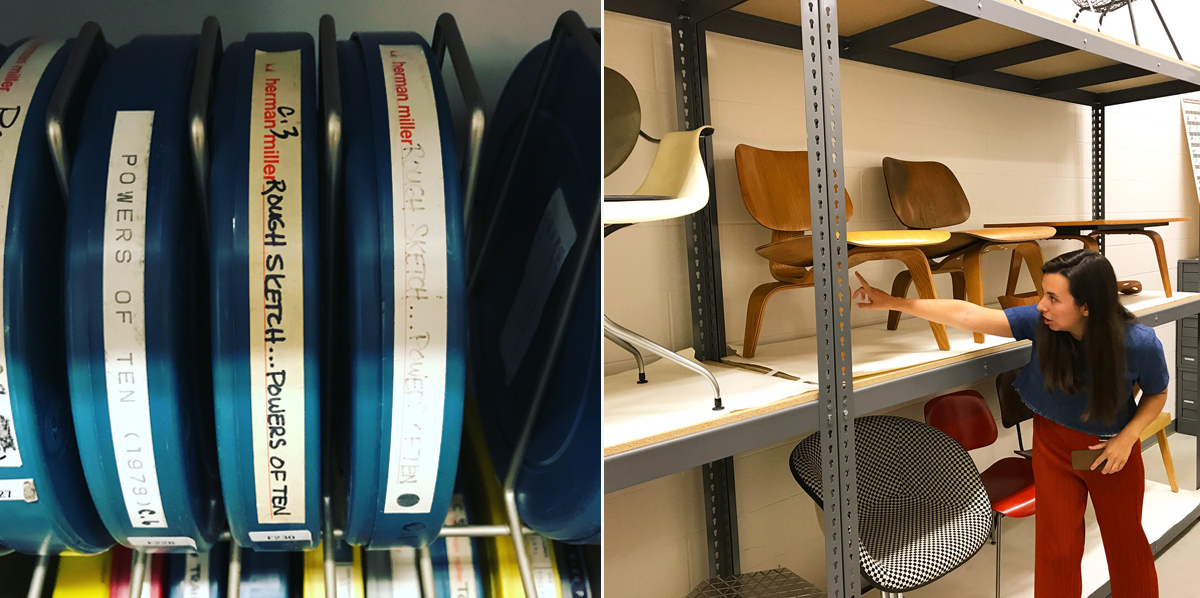
The archive owes a great deal to those who have tended to it in the past, but it’s currently helmed by energetic archivist, Amy Auscherman. We were fortunate to spend a few hours with her, combing through well-documented treasures and discovering some lesser-known gems. Visiting the private space is a treat for any design nerd. But exploring it with Auscherman—discussing the archive, her role and how today’s digital culture brings new challenges and opportunities—is even more exciting.
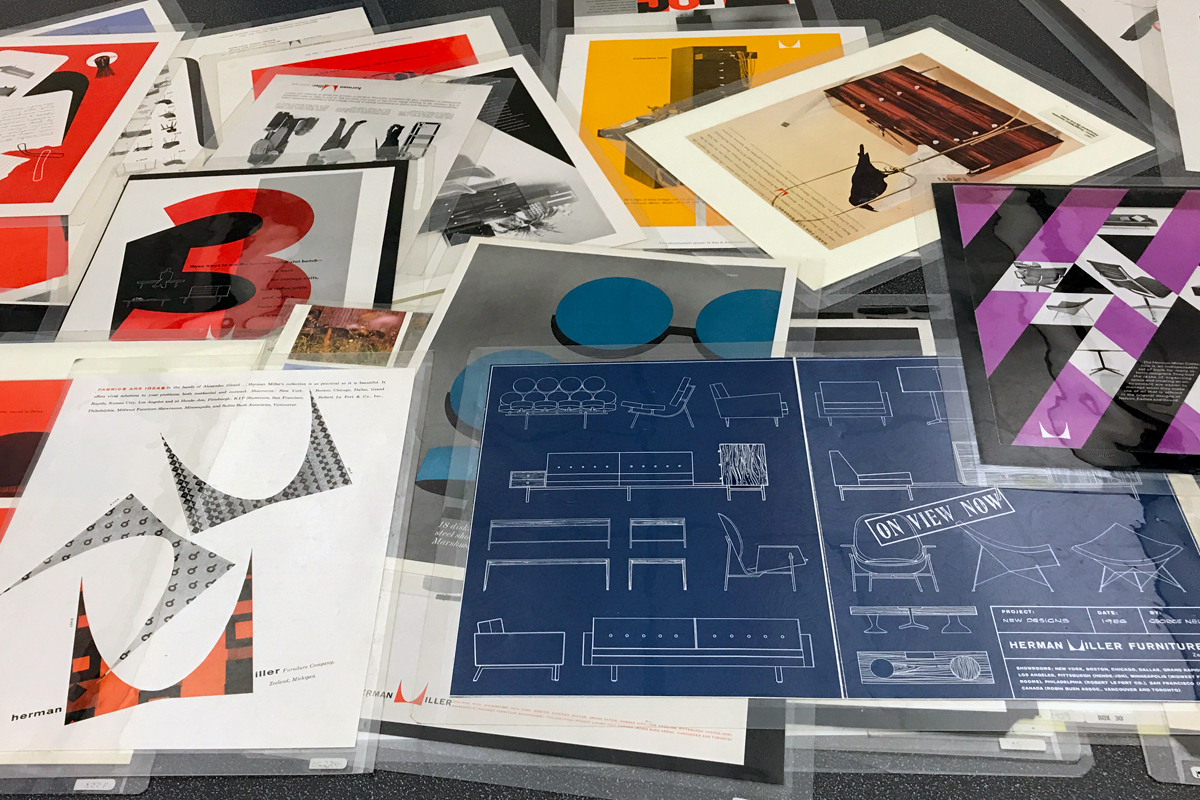
How would you explain your role at Herman Miller?
I am Herman Miller’s Corporate Archivist and often say I’m also Herman Miller’s de facto Corporate Historian. While most of my work is focused on supporting our marketing efforts—editorial, social media, customer experience tours. I also inform our [2D and 3D] brand design departments, product development, legal, and R+D departments. In addition, I interface frequently with outside institutions and aid curatorial staff in research and exhibitions. Every day is different! I could be gathering source material to help redevelop an archival piece; touring new members of, our sales team to give them a dose of the Herman Miller “Kool-Aid;” building an art, architecture and design history library for our corporate headquarters; or traveling to do research in other museum and archival collections that inform the holdings of Herman Miller’s archive. Truly a design nerd’s dream.
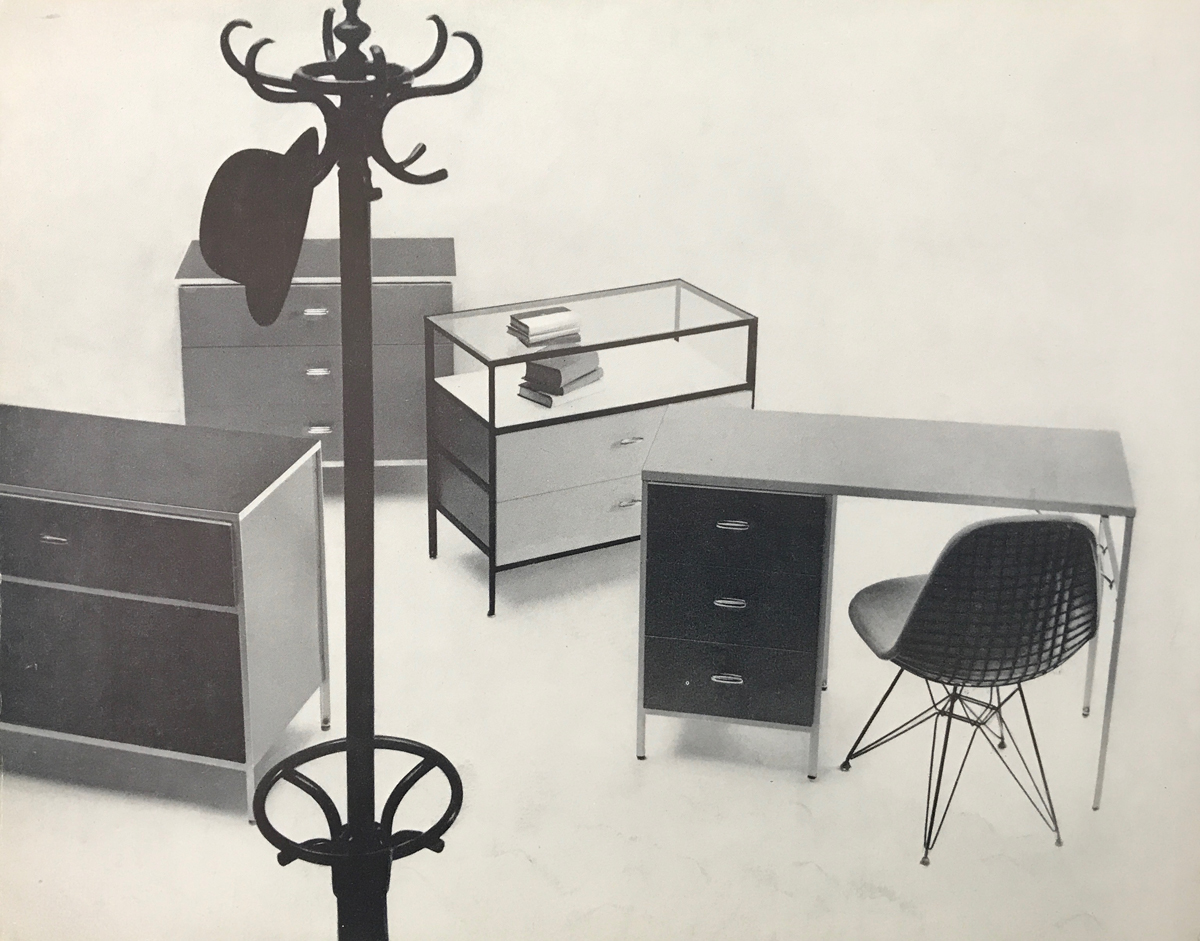
Not to stereotype, but many archivists would likely appear on the quieter and more introspective end of the personality spectrum. You’re effervescent and could easily do improv. How does your personality help you do your job?
I’m very aware of this stereotype and work hard to fight it! I’m an information professional—if I wasn’t accessible, I wouldn’t be doing my job. My role requires me to connect people with information they need, or didn’t know they needed. The more I get to know Herman Miller’s collection, the better I am at my job. One way I’m able to mine the depths of our holdings is by keeping abreast of projects and initiatives all around the business. I try my best to be proactive in offering up consultation from the archives, rather than waiting for people to come to us. When I came to Herman Miller, many around the business didn’t know the archive existed. I feel like I’ve had to do, in a sense, PR for the archive since I started three years ago. Now I see many more coming to me first! So it’s working!
In the corporate world, archives are not always seen as assets… At Herman Miller, the archive is seen as a valuable and exciting resource
You are fortunate that others before you captured a lot of material and that it is fairly well-organized. What were your thoughts as you got to know the Herman Miller archive, and what were some of the things you felt essential for it moving forward?
I’m often in awe of how much material has been amassed in the archive and that it has remained an important department in the business for over 70 years. In the corporate world, archives are not always seen as assets, but rather costly departments that don’t technically generate sales. At Herman Miller, the archive is seen as a valuable and exciting resource, and I’m working every day to build upon and enforce the importance of the collection to the business. We have a lot to tackle in the digital realm, which is daunting and exciting. One particular project I’m working on now is going to leave us with a lot of digitized material from the archive. I’m looking forward to figuring out how to package and share that stuff both inside and outside the business.
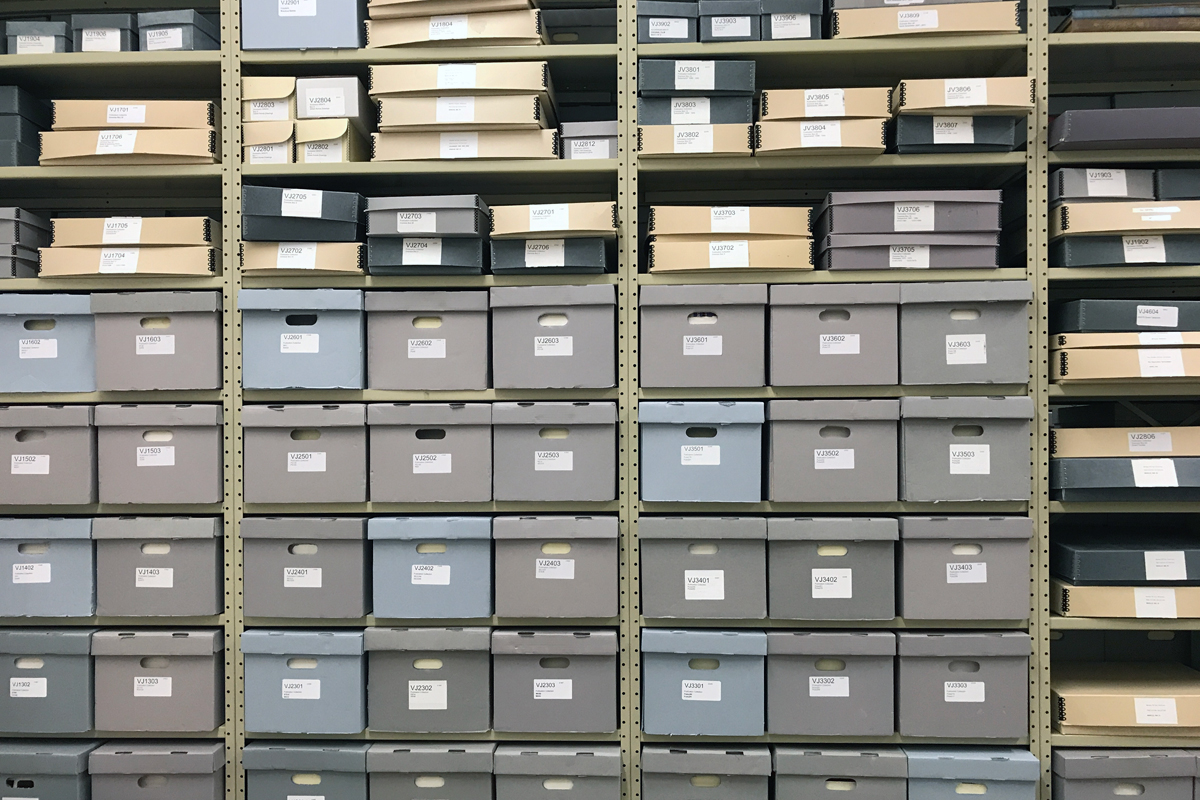
You mentioned that back in the 1970s most of the company’s furniture archive was gifted to several museums who were better able to manage, care for and share. Today there’s a desire to build it back up. Why does the company want to do that, how is it different than it was previously, and what are the kinds of things that you’re looking for? Is there a unicorn out there that you’re looking for?
In 1989 we established the Herman Miller Museum Consortium to help preserve the 800+ piece furniture collection that had amassed at our headquarters in West Michigan. At that time, it wasn’t feasible for the company to safely store the furniture—from a conservation sense—and we worked with The Henry Ford Museum of American Innovation [in Dearborn, MI] to identify institutions around the country that could take on some of the furniture collection for their own design collections. Today, we are slowly acquiring pieces for our own product development, exhibition, and use in our own facilities. Many pieces we acquire tend to have a provenance relevant to Herman Miller’s history. We’ve gotten pieces from local Herman Miller employees, as well as from collections of design world heavy-hitters like Irving Harper and Sina Pearson. I’m always on the lookout for furniture designed by Alexander Girard that Herman Miller first produced for Braniff Airlines lounges and later commercialized. We didn’t make it for long and it is especially hard to come by. Also anything early Eames—it’s interesting to chart the evolution of their designs by the construction of the furniture.
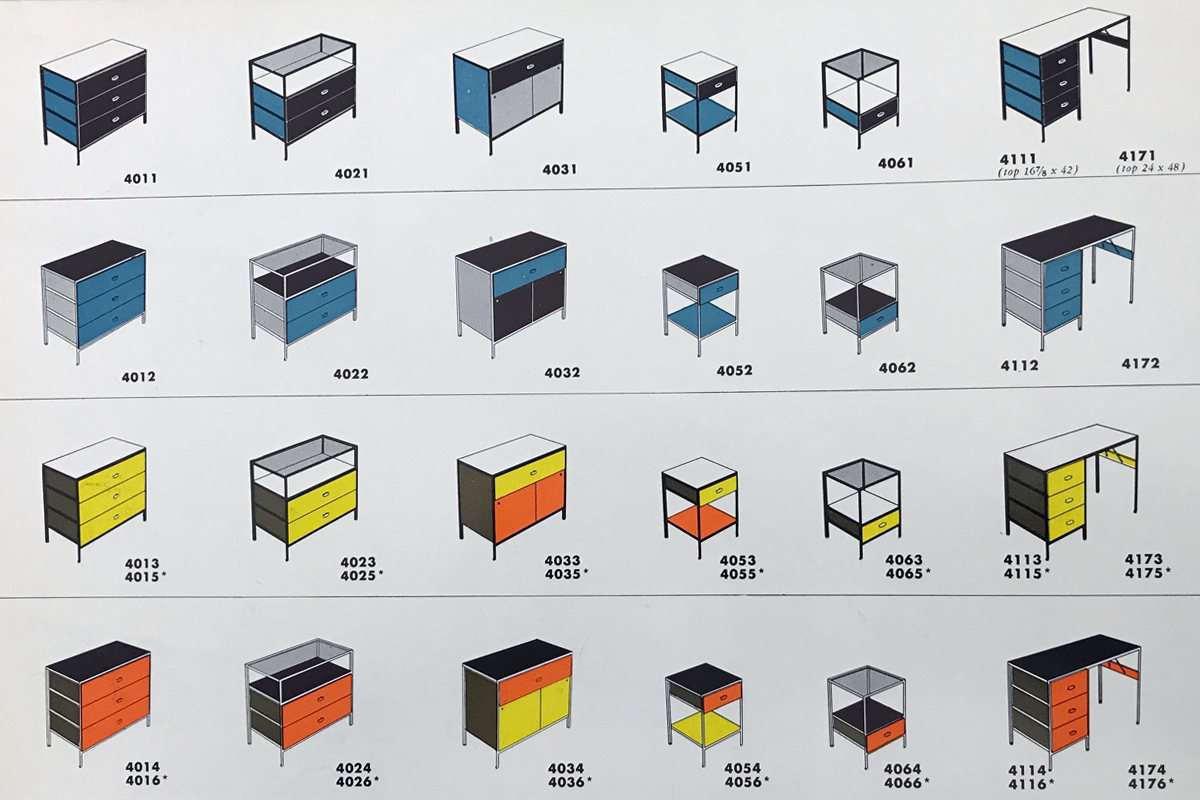
It’s arguably easier to look to the past—where you have extensive printed, photographed and relatively accessible formats. As technologies evolve, how do you capture things like digital designs and files, email, marketing materials, etc? How do you ensure that they’ll be as easily accessible tomorrow as the older items in your archive are today?
Right now, I have digital material saved in multiple formats—TIFF, JPEG, PDF, etc—among several places on Herman Miller’s own servers, digital asset manager, and my own personal hard drives. We are still working to define processes that account for saving digital material for the archive. I try my best to get everyone to think about creating their own personal digital archive—emails, important design/text files, photographs—that can be later ingested into our collection. Some of the best paper-based collections in Herman Miller’s archive came in original order and had been maintained by individuals or their administrative assistants.
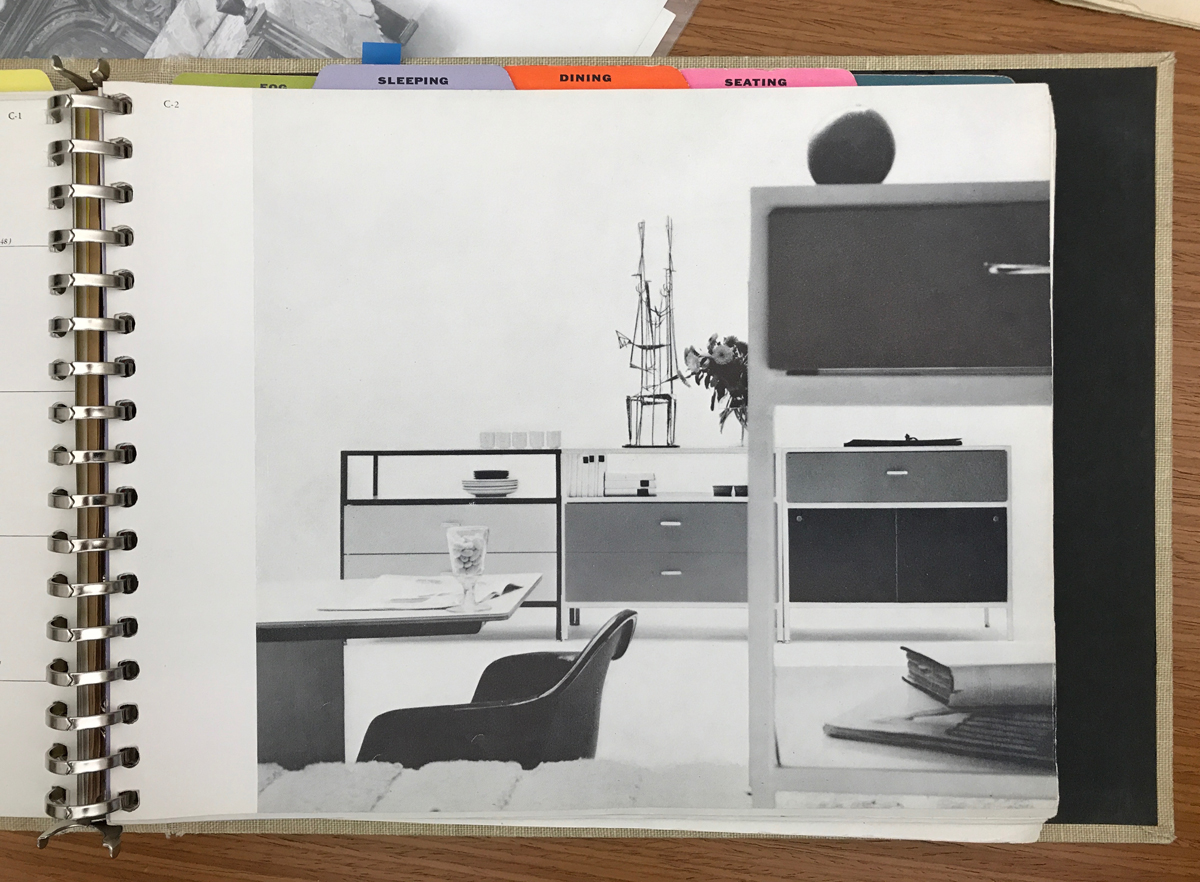
What are some of your favorite things that you’ve come across in the archive?
Pep Nagelkirk used to oversee Herman Miller’s model shop and left one of the most useful and interesting collections. His records relate to the design, development, and marketing of products and date from 1949 to 1976. The files include release for production documentation; correspondence between Herman Miller engineering and marketing and designers; test reports and cost information; photographs and product drawings; vendor purchase orders; product literature, fabric and finish samples. These are especially helpful in development when we are looking to reintroduce archival product.
I also love coming across echoes of Alexander Girard’s own archival process for his textile designs. He was the ultimate archivist and the level of documentation within his own collection is astounding. Thankfully he donated many pieces of his textile archive to Herman Miller, but material also lives at the Vitra Design Museum and the Cooper Hewitt. His own cataloging process makes it easier to triangulate variations in textile designs between institutions.

Few people have the opportunity to come and visit you in the archive. What are some of the ways you’re making it more accessible to more people? Does social media plat a role in that?
Social media definitely helps. Whether I’m sharing bits of my work days from my own personal Instagram [@acid_free] or helping coordinate #tbt and other archival posts for Herman Miller’s social channels, I try my hardest to get material out there for everyone. As a brand, Herman Miller has so many fans. I’m also working hard to better interface with researchers, curators and scholars to make Herman Miller’s archive accessible for research.

What are some of the biggest challenges and opportunities you face?
I’m excited to figure out a way to share the archive in a digital context. While social media helps, I’d like to help people do their own research. Whether it’s perusing our original catalogs and marketing material to date a vintage furniture piece, or reading reports on ergonomics from Robert Propst at the Herman Miller Research Corporation, I believe the material in our archive speaks to multiple disciplines internally at Herman Miller, and out in the world. I look forward to finding a beautiful and useful design solution. The opportunities for information dissemination in the digital realm is exciting. I also look forward to sharing more of Herman Miller’s archival material in real life through exhibitions in our West Michigan HQ, NYC flagship, dealerships across the country, and in museums.
Images by Evan Orensten

